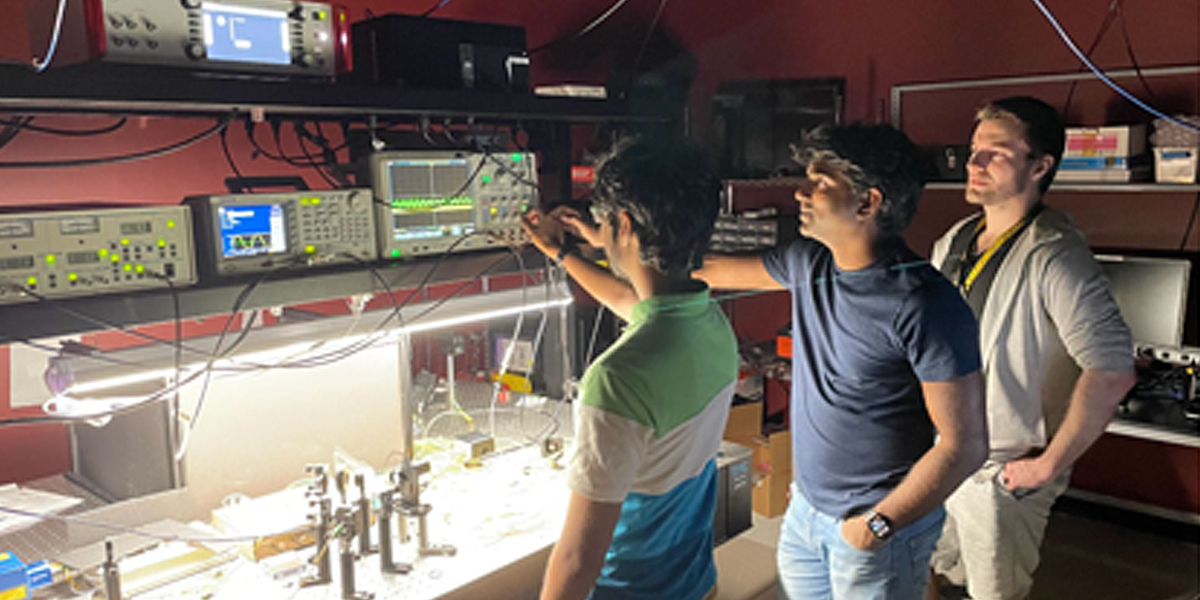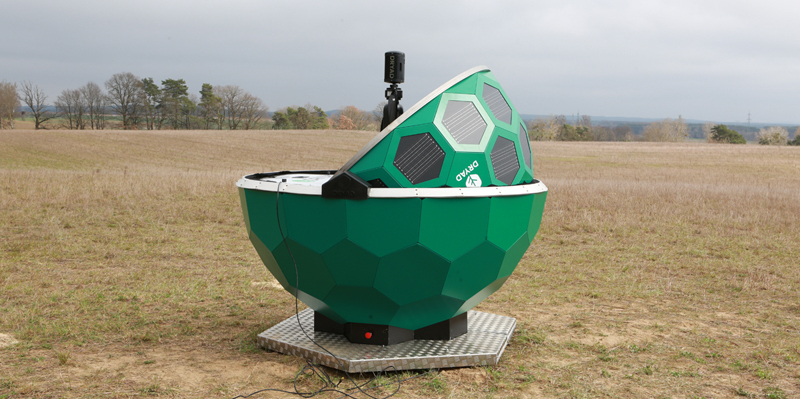Bernice Chan explains how researchers are making quantum sensing tools more compact and accurate to replace GPS

Fundamental physics—let alone quantum physics—might sound complicated to many, but it can actually be applied to solve everyday problems.
Imagine navigating to an unfamiliar place. Most people would suggest using GPS, but what if you were stuck in an underground tunnel where radio signals from satellites were not able to penetrate? That's where quantum sensing tools come in.
USC Viterbi Information Sciences Institute researchers Jonathan Habif and Justin Brown, both from ISI's new Laboratory for Quantum-Limited Information, are working at making sensing instruments like atomic accelerometers smaller and more accurate so they can be used to navigate when GPS is down.
Tackling the size conundrum
Atoms are excellent at making accurate measurements because they are all the same. Atomic measurements made in one laboratory would be indistinguishable from those made in another laboratory, as the atoms behave in precisely the same way.
One example of how this physics concept can be applied is making a highly accurate navigation system with these atoms.
"As an atomic physicist, I work with atoms in a gas and talk to the atoms with lasers," Brown said. "As atoms have mass, they can be used to measure accelerations, helping us build atom-based sensors like atomic accelerometers."
Habif added, "The accelerometers let you know how fast and far you're moving in a given direction. They can be coupled with gyroscopes, which tell you whether you've changed directions and how far you've turned, to make a complete measurement. These navigation instruments are useful when you don't have access to GPS."
One of the challenges they're facing is how they can engineer this in a thoughtful way.
For example, they have to think very carefully about how they can miniaturize atomic accelerometers. These accelerometers have historically operated in big laboratory scale systems, where equipment is heavy and consumes a lot of power. To make the accelerometers suitable for public use, Habif and Brown are investigating how to retain their high precision in a much more compact, power-efficient and attractive medium.
Brown said, "We want to take this out in the field and make it smaller at the same time, but the techniques and supplies that we're drawing from are not very conducive to doing so just yet. I'm thinking about how to talk to the atoms in a different way so that we can get the capabilities to apply it to problems outside the laboratory."

Applications in defense and adapting to the real world
Not only do quantum sensing devices work in areas that don't have access to GPS, they can also be part of an exciting new avenue: national security applications.
"Modern conflicts are becoming increasingly electronic and less kinetic, as nations vie for information superiority. The radio signal from GPS satellites is easy to disrupt and jam because it is far away. Thus, in any modern conflict, both sides will attempt to deny each other access to these radio signals," Brown said.
"More traditional navigation instruments like inertial systems are un-jammable, as they work by adding up accelerations and rotations to measure our change in position. So they can replace GPS in times of conflict. However, all the errors made also get added up, so we are interested in using an atom-based measurement to ensure it is more accurate."
Atomic accelerometers are one example of these inertial systems. These systems are present in sensors on aircraft and ships, guiding their movement through airspaces and waters. However, existing mechanical-based sensors can wear out easily due to friction, leading to them being swapped out every year and costing a lot of money. They are also hard to build because they're small and delicate.
The US Department of Defense (DoD) is looking for upgrades in their inertial systems so that these difficulties can be overcome. The quantum approach based on atoms pursued by Brown and other groups could provide acceleration measurements with no moving parts.
"For example, if submarines want to be stealthy and quiet in defense scenarios, keeping track of what it's doing and how it's moved through inertial systems is pretty much the only game in town. I'm developing ideas on improving these systems for the DoD, so that they can be downsized and more cost-efficient," noted Brown.
Simplifying the tools
Brown maintains that quantum sensing will be important on many fronts.
"Preparing for technical surprise means preparing for when GPS fails—the question isn't if GPS fails," said Brown. "It's very easy to stop GPS from working, so inertial sensors will always be useful. But it's still vital for us to solve the size issue, because a lot of these sensors still end up at about the size of a washing machine. I could simplify the tool itself, but I still need to make a good measurement."
Achieving this fine balance between simplicity and accuracy is the researchers' main goal, and they hope that their efforts will translate to real-world prototypes someday.
Bernice Chan is a Science and Technology Writer in the Information Sciences Institute at the University of Southern California
Subscribe to our newsletter
Stay updated on the latest technology, innovation product arrivals and exciting offers to your inbox.
Newsletter

